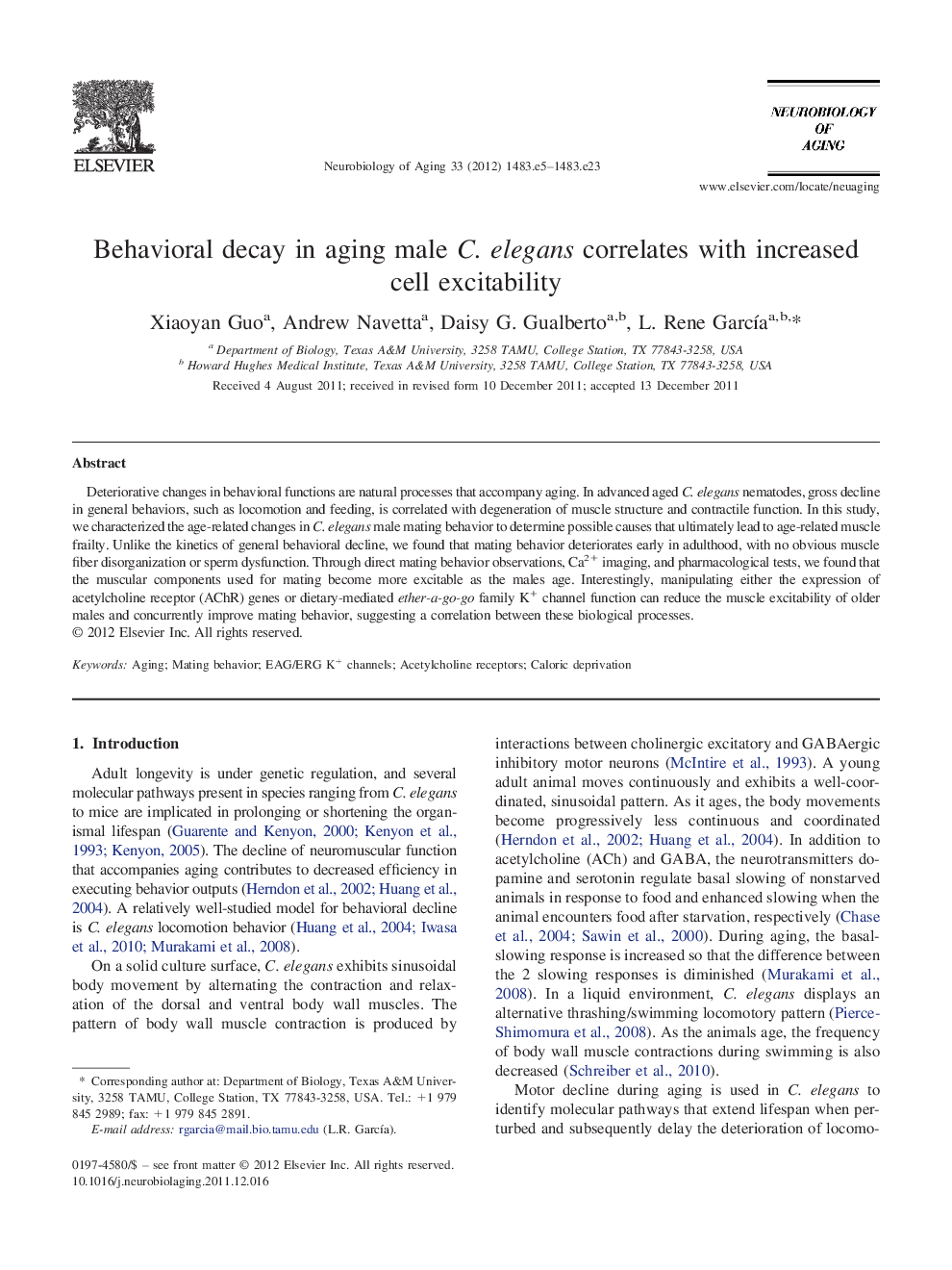| کد مقاله | کد نشریه | سال انتشار | مقاله انگلیسی | نسخه تمام متن |
|---|---|---|---|---|
| 6808942 | 1433593 | 2012 | 19 صفحه PDF | دانلود رایگان |
عنوان انگلیسی مقاله ISI
Behavioral decay in aging male C. elegans correlates with increased cell excitability
دانلود مقاله + سفارش ترجمه
دانلود مقاله ISI انگلیسی
رایگان برای ایرانیان
کلمات کلیدی
موضوعات مرتبط
علوم زیستی و بیوفناوری
بیوشیمی، ژنتیک و زیست شناسی مولکولی
سالمندی
پیش نمایش صفحه اول مقاله

چکیده انگلیسی
Deteriorative changes in behavioral functions are natural processes that accompany aging. In advanced aged C. elegans nematodes, gross decline in general behaviors, such as locomotion and feeding, is correlated with degeneration of muscle structure and contractile function. In this study, we characterized the age-related changes in C. elegans male mating behavior to determine possible causes that ultimately lead to age-related muscle frailty. Unlike the kinetics of general behavioral decline, we found that mating behavior deteriorates early in adulthood, with no obvious muscle fiber disorganization or sperm dysfunction. Through direct mating behavior observations, Ca2+ imaging, and pharmacological tests, we found that the muscular components used for mating become more excitable as the males age. Interestingly, manipulating either the expression of acetylcholine receptor (AChR) genes or dietary-mediated ether-a-go-go family K+ channel function can reduce the muscle excitability of older males and concurrently improve mating behavior, suggesting a correlation between these biological processes.
ناشر
Database: Elsevier - ScienceDirect (ساینس دایرکت)
Journal: Neurobiology of Aging - Volume 33, Issue 7, July 2012, Pages 1483.e5-1483.e23
Journal: Neurobiology of Aging - Volume 33, Issue 7, July 2012, Pages 1483.e5-1483.e23
نویسندگان
Xiaoyan Guo, Andrew Navetta, Daisy G. Gualberto, L. Rene GarcÃa,